1. Perlman S. Another decade, another coronavirus. N Engl J Med. 2020; 382(8):760–762. PMID:
31978944.

2. Sohrabi C, Alsafi Z, O’Neill N, Khan M, Kerwan A, Al-Jabir A, et al. World Health Organization declares global emergency: a review of the 2019 novel coronavirus (COVID-19). Int J Surg. 2020; 76:71–76. PMID:
32112977.

3. Kim JY, Choe PG, Oh Y, Oh KJ, Kim J, Park SJ, et al. The first case of 2019 novel coronavirus pneumonia imported into Korea from Wuhan, China: implication for infection prevention and control measures. J Korean Med Sci. 2020; 35(5):e61. PMID:
32030925.

4. Chen N, Zhou M, Dong X, Qu J, Gong F, Han Y, et al. Epidemiological and clinical characteristics of 99 cases of 2019 novel coronavirus pneumonia in Wuhan, China: a descriptive study. Lancet. 2020; 395(10223):507–513. PMID:
32007143.

5. Bezzio C, Saibeni S, Variola A, Allocca M, Massari A, Gerardi V, et al. Outcomes of COVID-19 in 79 patients with IBD in Italy: an IG-IBD study. Gut. 2020; 69(7):1213–1217. PMID:
32354990.

6. Dulai PS, Thompson KD, Blunt HB, Dubinsky MC, Siegel CA. Risks of serious infection or lymphoma with anti-tumor necrosis factor therapy for pediatric inflammatory bowel disease: a systematic review. Clin Gastroenterol Hepatol. 2014; 12(9):1443–1451. PMID:
24462626.

7. Neurath MF. COVID-19 and immunomodulation in IBD. Gut. 2020; 69(7):1335–1342. PMID:
32303609.

8. Monteleone G, Ardizzone S. Are patients with inflammatory bowel disease at increased risk for Covid-19 infection? J Crohn’s Colitis. 2020; 14(9):1334–1336. PMID:
32215548.

9. Manivannan M, Jogalekar MP, Kavitha MS, Maran BA, Gangadaran P. A mini-review on the effects of COVID-19 on younger individuals. Exp Biol Med (Maywood). 2021; 246(3):293–297. PMID:
33210552.

10. Hyams JS, Ferry GD, Mandel FS, Gryboski JD, Kibort PM, Kirschner BS, et al. Development and validation of a pediatric Crohn’s disease activity index. J Pediatr Gastroenterol Nutr. 1991; 12(4):439–447. PMID:
1678008.

11. Turner D, Otley AR, Mack D, Hyams J, de Bruijne J, Uusoue K, et al. Development, validation, and evaluation of a pediatric ulcerative colitis activity index: a prospective multicenter study. Gastroenterology. 2007; 133(2):423–432. PMID:
17681163.

12. Daperno M, D’Haens G, Van Assche G, Baert F, Bulois P, Maunoury V, et al. Development and validation of a new, simplified endoscopic activity score for Crohn’s disease: the SES-CD. Gastrointest Endosc. 2004; 60(4):505–512. PMID:
15472670.

13. Lobatón T, Bessissow T, De Hertogh G, Lemmens B, Maedler C, Van Assche G, et al. The Modified Mayo Endoscopic Score (MMES): a new index for the assessment of extension and severity of endoscopic activity in ulcerative colitis patients. J Crohn’s Colitis. 2015; 9(10):846–852. PMID:
26116558.

14. Huang JG, Aw MM. Pediatric inflammatory bowel disease in Asia: epidemiology and natural history. Pediatr Neonatol. 2020; 61(3):263–271. PMID:
32005607.

15. Sýkora J, Pomahačová R, Kreslová M, Cvalínová D, Štych P, Schwarz J. Current global trends in the incidence of pediatric-onset inflammatory bowel disease. World J Gastroenterol. 2018; 24(25):2741–2763. PMID:
29991879.

16. Choe JY, Choi S, Song KH, Jang HJ, Choi KH, Yi DY, et al. Incidence and prevalence trends of pediatric inflammatory bowel disease in the Daegu-Kyungpook province from 2017 to 2020. Front Pediatr. 2022; 9:810173. PMID:
35059365.

17. Nogueira-de-Almeida CA, Del Ciampo LA, Ferraz IS, Del Ciampo IR, Contini AA, Ued FD. COVID-19 and obesity in childhood and adolescence: a clinical review. J Pediatr (Rio J). 2020; 96(5):546–558. PMID:
32768388.

18. Ahn SY, Park JY, Lim IS, Chae SA, Yun SW, Lee NM, et al. Changes in the occurrence of gastrointestinal infections after COVID-19 in Korea. J Korean Med Sci. 2021; 36(24):e180. PMID:
34155841.

19. Park S, Kang Y, Koh H, Kim S. Increasing incidence of inflammatory bowel disease in children and adolescents: significance of environmental factors. Clin Exp Pediatr. 2020; 63(9):337–344. PMID:
32024322.

20. Levine A, Koletzko S, Turner D, Escher JC, Cucchiara S, de Ridder L, et al. ESPGHAN revised Porto criteria for the diagnosis of inflammatory bowel disease in children and adolescents. J Pediatr Gastroenterol Nutr. 2014; 58(6):795–806. PMID:
24231644.

21. Wong K, Isaac DM, Wine E. Growth delay in inflammatory bowel diseases: significance, causes, and management. Dig Dis Sci. 2021; 66(4):954–964. PMID:
33433805.

22. Ishige T. Growth failure in pediatric onset inflammatory bowel disease: mechanisms, epidemiology, and management. Transl Pediatr. 2019; 8(1):16–22. PMID:
30881894.

23. Ruemmele FM, Veres G, Kolho KL, Griffiths A, Levine A, Escher JC, et al. Consensus guidelines of ECCO/ESPGHAN on the medical management of pediatric Crohn’s disease. J Crohn’s Colitis. 2014; 8(10):1179–1207. PMID:
24909831.

24. van Rheenen PF, Aloi M, Assa A, Bronsky J, Escher JC, Fagerberg UL, et al. The medical management of paediatric Crohn’s disease: an ECCO-ESPGHAN guideline update. J Crohn’s Colitis. 2020.

25. Yu Y, Chen KC, Chen J. Exclusive enteral nutrition versus corticosteroids for treatment of pediatric Crohn’s disease: a meta-analysis. World J Pediatr. 2019; 15(1):26–36. PMID:
30666565.

26. Gong D, Yu X, Wang L, Kong L, Gong X, Dong Q. Exclusive enteral nutrition induces remission in pediatric crohn’s disease via modulation of the gut microbiota. BioMed Res Int. 2017; 2017:8102589. PMID:
29124070.

27. Grover Z, Burgess C, Muir R, Reilly C, Lewindon PJ. Early mucosal healing with exclusive enteral nutrition is associated with improved outcomes in newly diagnosed children with luminal Crohn’s disease. J Crohn’s Colitis. 2016; 10(10):1159–1164. PMID:
26980840.

28. Allocca M, Fiorino G, Zallot C, Furfaro F, Gilardi D, Radice S, et al. Incidence and patterns of COVID-19 among inflammatory bowel disease patients from the Nancy and Milan cohorts. Clin Gastroenterol Hepatol. 2020; 18(9):2134–2135. PMID:
32360811.

29. D’Amico F, Peyrin-Biroulet L, Danese S. Inflammatory bowel diseases and COVID-19: the invisible enemy. Gastroenterology. 2020; 158(8):2302–2304. PMID:
32305331.

30. Park YE, Lee YJ, Chang JY, Song HJ, Kim DH, Yang YJ, et al. KASID guidance for clinical practice management of adult inflammatory bowel disease during the COVID-19 pandemic: expert consensus statement. Korean J Gastroenterol. 2021; 78(2):105–116. PMID:
34446633.

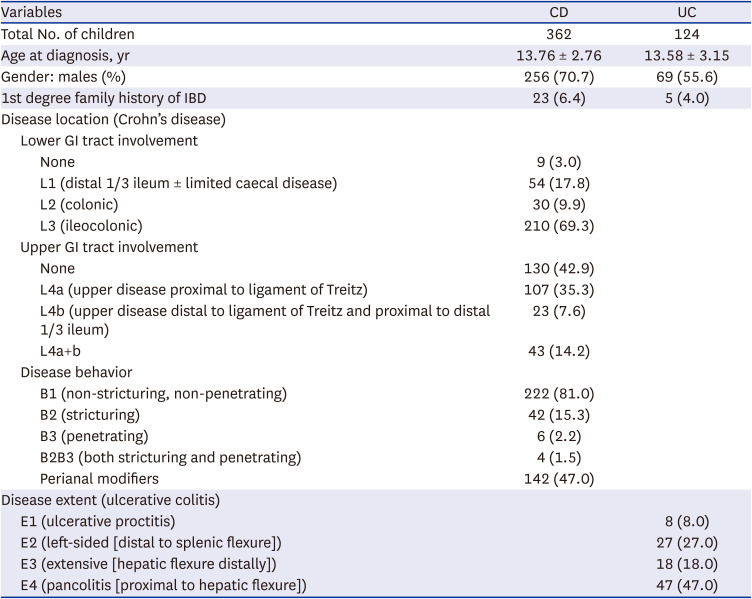
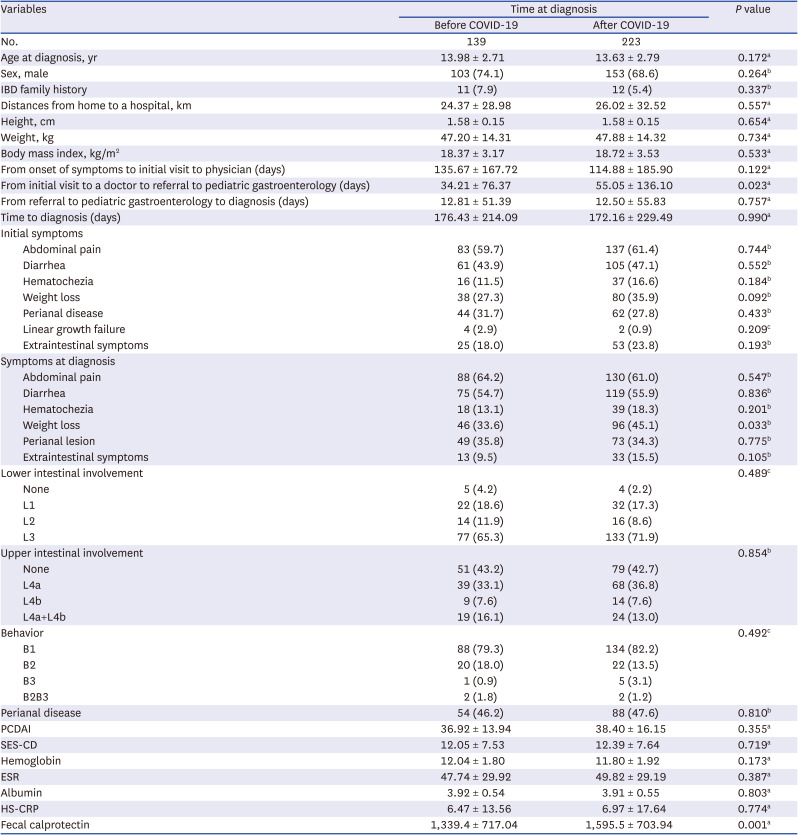
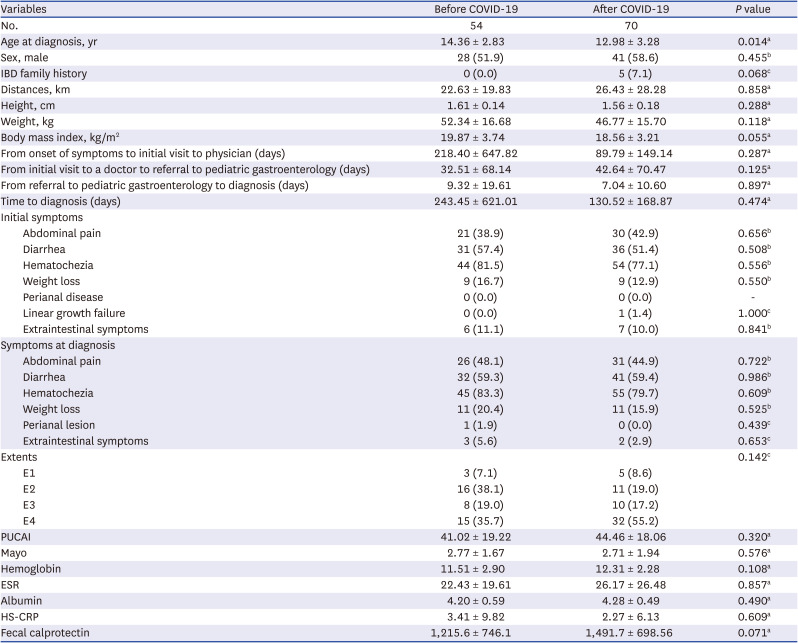


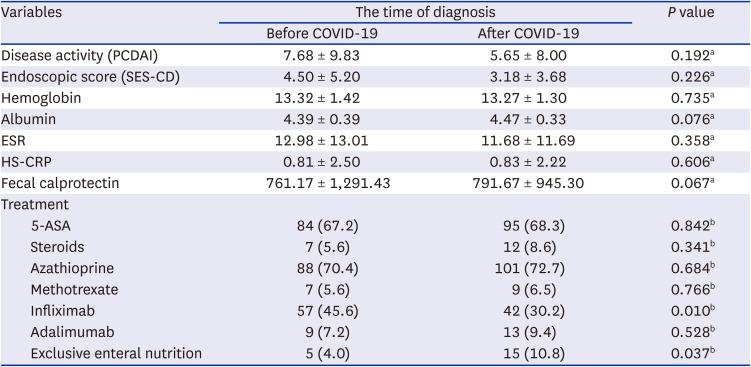
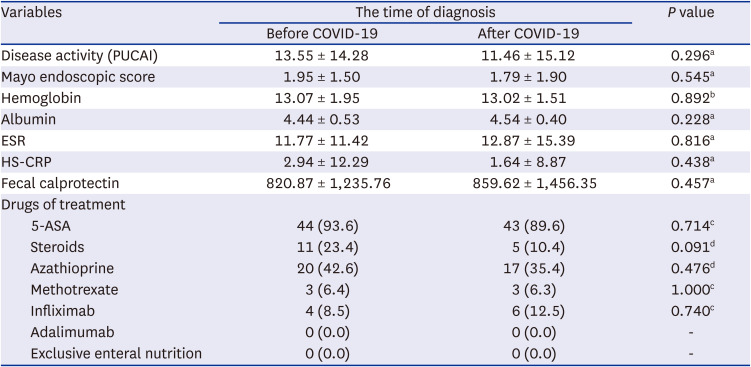
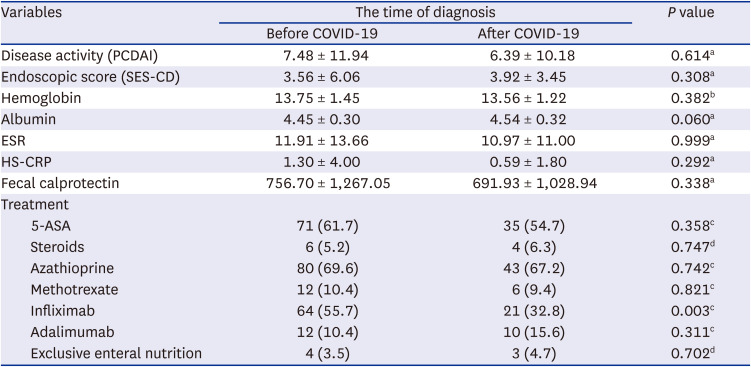
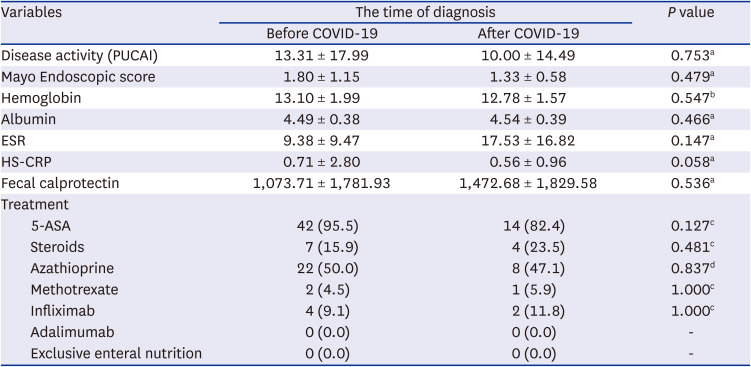





 PDF
PDF Citation
Citation Print
Print



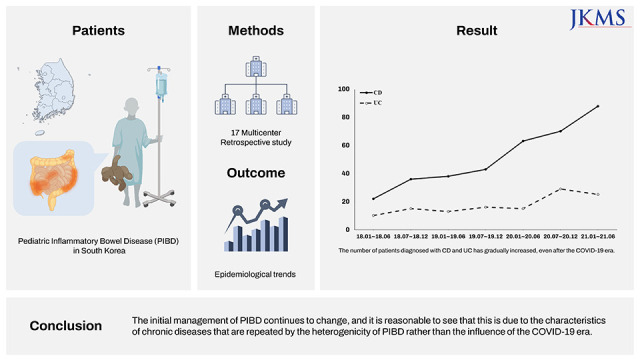
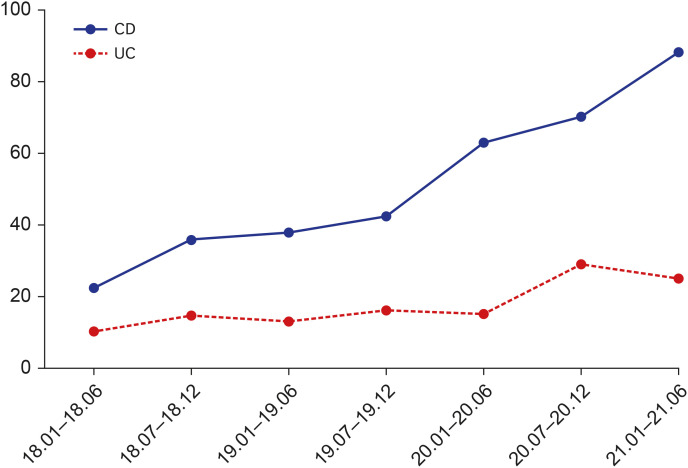

 XML Download
XML Download